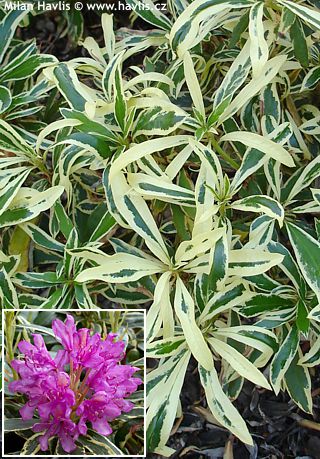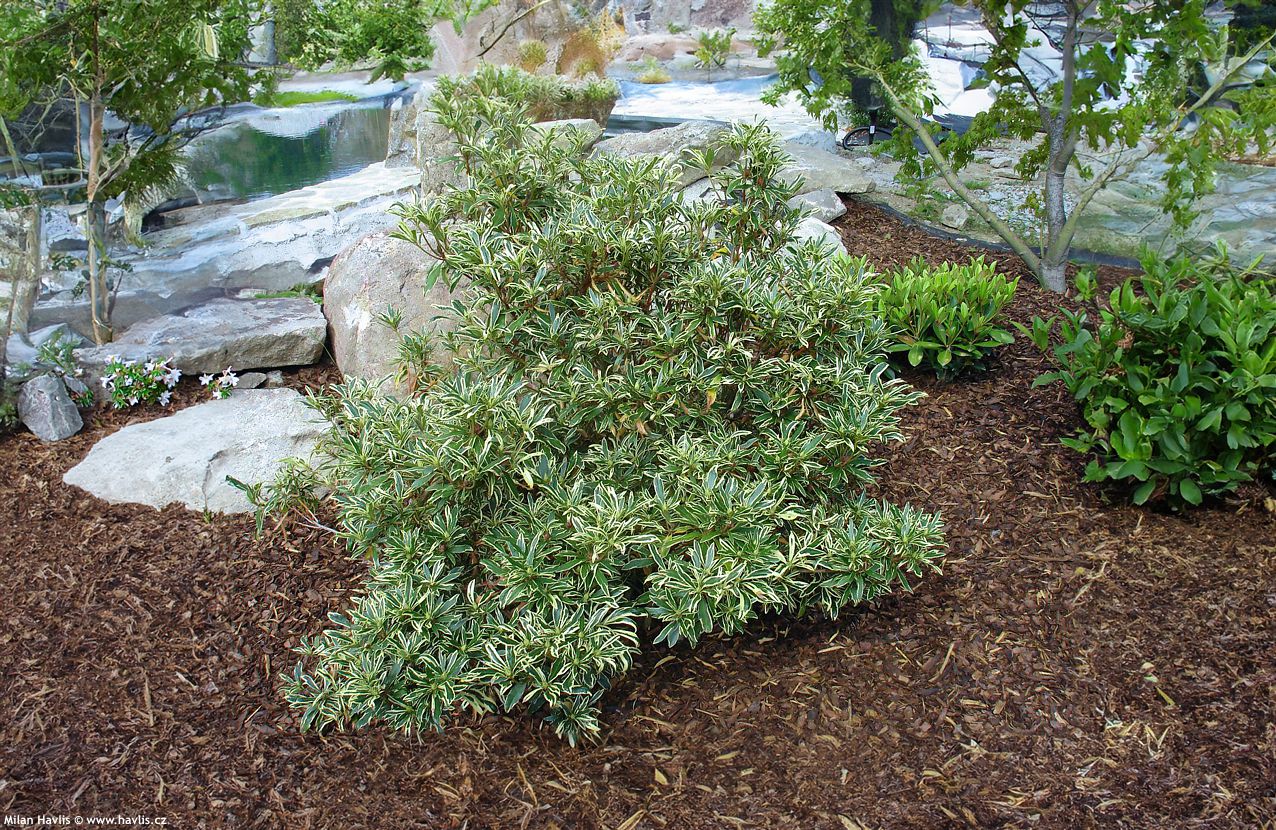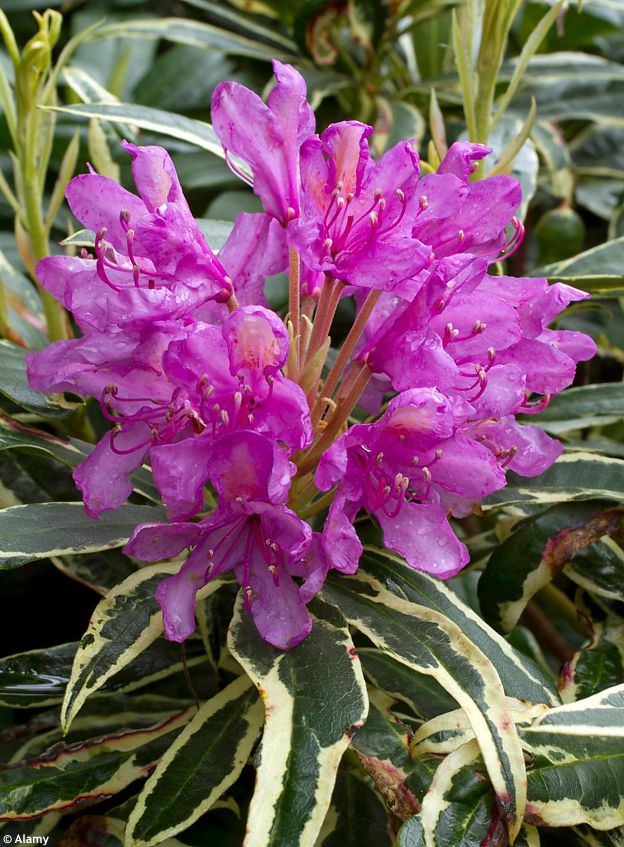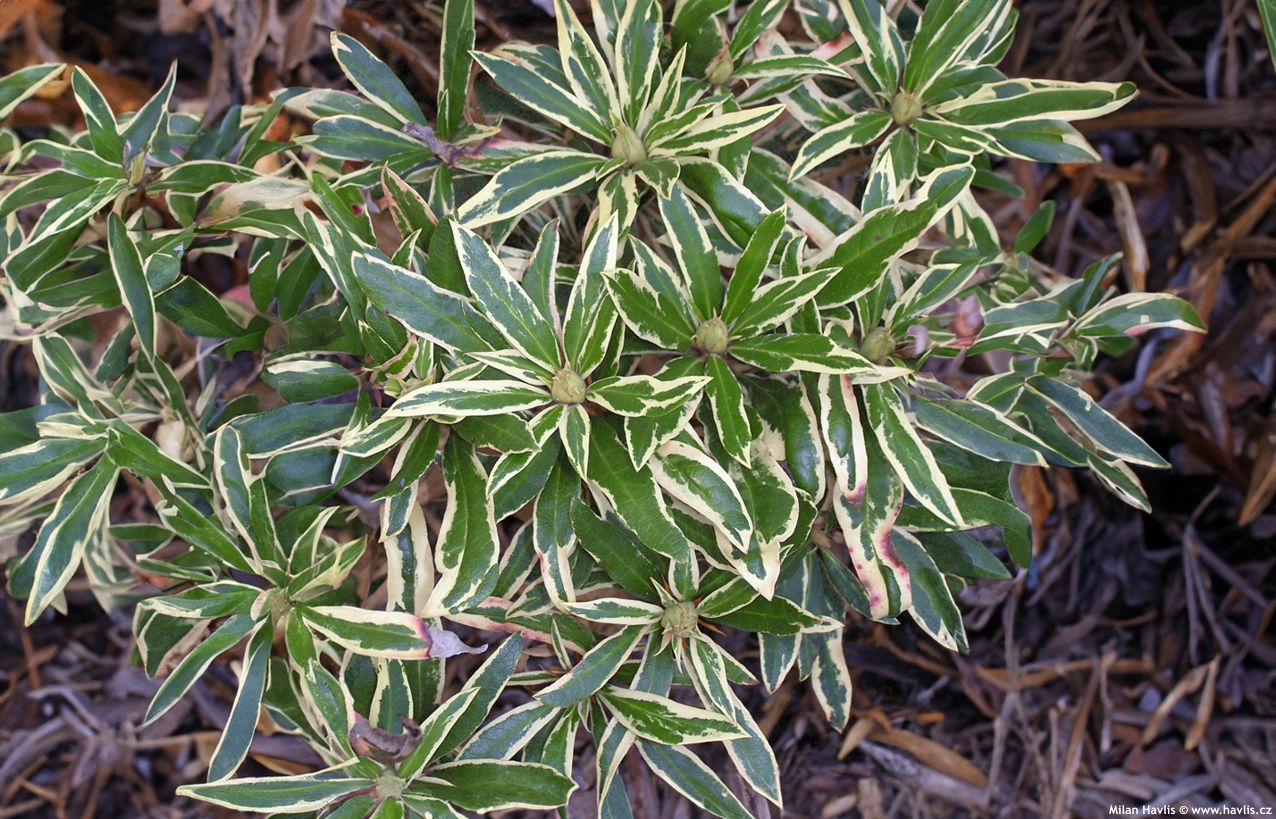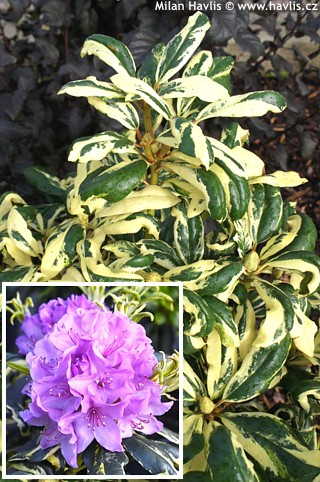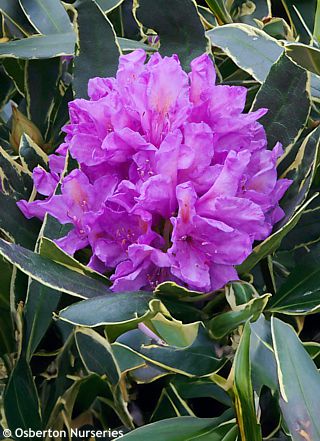Rhododendron 'VARIEGATUM' rhododendron (Ponticum group)
Rhododendron
Rhododendrons are reliable, beautifully flowering, evergreen shrubs of variable origin: S.W. China, Himalayas, Northern America, and even Europe. The original species were hybridized several times for better performance so in the 1950´s there were more than 10,000 cultivars registered, and the number keeps increasing.
Rhododendrons from the Ponticum group (Pontus = Black Sea) originate from southwestern Europe, Great Britain, the Caucasus, and Western Asia, and preserved fossils prove their even wider distribution before The Last Glacial Maximum (abt. 20,000 years ago). In modern history we find the first record of its cultivation for ornamental purposes in 1763 in Britain. They are commonly recognized by narrow leaves and spreading habit. The botanical species forms abundant suckers which allow formation of colonies often endangering original flora. Therefore, it is now considered an invasive species in many countries of its native habitat. Fortunately, most varieties that fall into this group do not have 100% of the species’ genes as they were crossbred with other species, so we needn’t about their invasion in our gardens.
Variegatum, often also called Ponticum Variegatum, is an attractive selection or hybrid of Black Sea rhododendron with super attractive variegated foliage. At first glance, it is obvious that this color anomaly was most likely caused by a viral mutation, as the creamy white edges of the leaves are slightly curled, uneven and often deform the leaf slightly, which paradoxically adds interest. Though, there is one downside: these leaves do not tolerate direct sunlight during hard frost and may get damaged. They are evergreen, leathery, 10-15 long, dark green with creamy white margins. The flowers are broadly bell-shaped, deep pink, open in May but do not appear automatically or reliably. The plant must be very happy in your site to show will to set flower buds regularly every other year. It grows moderately into a spreading shrub of dense habit.
The variety was first described in 1837 by French botanist Louis-Victor Lefèvre (1810-1878). It is believed that Variegatum may be identical to Silver Edge variety, but in our experience we noticed that Silver Edge’s flowers are a lighter pink in colour and that leaves are flatter with less curled edges. It may be a proper sign of a varietal distinction or just a slight mutation coming from the mother plant whose tissue was used for propagation. Leaving it to you to decide 😊
For a better-looking plant deadhead where possible. The roots are shallow, spreading to sides in search for nutrients. Never plant them too deep. The soil must be acidic (pH 4.5-5.5), rich in humus, cool and always moist. Ideal soil mixture is peat with lime-free, light garden soil topped with leaf-mould. It is hardy to min. -23°C (USDA zone 6).
Last update 11-02-2009; 15-01-2024

































